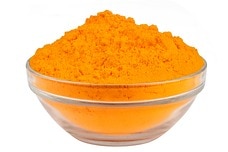Calcium
It’s common knowledge that calcium builds strong bones, but many people remain unaware of the dozens of other important physiological processes in which calcium is involved. Calcium is a trace mineral element that our body depends on for health. Getting enough calcium can not only improve your bone strength but may also contribute to whole-body health.
What Is Calcium?
Calcium is a chemical element, number 20 on the periodic table. This mineral is considered a metal. We get most of our dietary calcium not in its free form, but in compounds with other molecules. This makes the calcium more stable, allowing the body to digest the compound and free calcium for use in a variety of physiological processes.
Physiological Role of Calcium in the Body
Calcium plays a major role in bone health, with calcium and phosphorus representing the primary minerals that lend bones strength (Weaver, 2016). Calcium is also important for nerve impulse transmission, as an influx of cellular calcium is needed for individual neurons to release their signalling molecules to make contact with nearby cells. Calcium also helps to mediate the constriction and relaxation of blood vessels, secretion of hormones, muscle contraction, and enzymatic reactions needed for cell metabolism.
Health Benefits of Getting Enough Calcium
Decades of research supports the use of calcium to improve health outcomes for individuals at risk for certain conditions. For instance, osteoporosis is a condition characterized by increased bone brittleness and loss of bone strength. Getting enough calcium can reduce your risk of osteoporosis (Office of Dietary Supplements, 2016). This is particularly important for postmenopausal women, as hormonal changes can negatively impact bone health.
Getting enough calcium may also reduce your risk of developing kidney stones, particularly when taken with vitamin D (Weaver, 2014). Calcium is also associated with lower risk of hypertension during pregnancy, colorectal cancer, and lead toxicity among children. Furthermore, some scientific evidence suggests that increasing dietary calcium can promote healthy weight loss in overweight or obese individuals. Calcium may also lower your risk of hypertension, which is associated with your overall cardiovascular risk. This variety of beneficial effects from calcium speaks to the important role the mineral plays in dozens of metabolic processes.
Recommended Daily Intake of Calcium
The Institute of Medicine has established a recommended daily allowance for calcium (Weaver, 2014). This sets forth the amount of calcium that regular people need to maintain good health. The recommended daily allowance depends on age. Adult men and women below age 50 need 1,000 mg of calcium per day. From age 51 to 70, men should continue to aim for 1,000 mg daily, while women need slightly more, at 1,200 mg per day. Men and women above age 71 should get 1,200 mg of calcium per day. The increasing recommended daily allowance of calcium for older adults is due to their increased risk for osteoporosis and other bone problems.
Unfortunately, many Americans do not meet their daily calcium target. Despite calcium being crucial for healthy development, just 23% of boys and 15% of girls between the age of 9 and 13 years meet the recommended daily allowance (Bailey et al., 2010). Adults aged 19 to 30 do not fare much better, with only two-thirds of men and one-third of women getting enough.
Foods that Are Good Sources of Calcium
Certain foods in the U.S. diet are fortified with calcium to help people get enough. For example, orange juice and breakfast cereals are typically fortified with calcium. Some natural sources of dietary calcium include:
- Tofu (½ cup serving): 434 mg
- Yogurt (1 cup): 415 mg
- Sardines (1 cup): 325 mg
- Milk (1 cup): 300 mg
- Cheddar cheese (1.5 ounces): 303 mg
- White beans (½ cup): 81 mg
- Bok choy (½ cup): 79 mg
- Figs (dried; ¼ cup): 61 mg
- Orange (1 medium): 60 mg
- Kale (½ cup, cooked): 47 mg
Calcium Deficiency Signs and Symptoms
Severe calcium deficiency tends to be quite rare in the United States (Office of Dietary Supplements, 2016). This is because your body has one large source of calcium that is constantly available: the bones. When blood levels of calcium dip too low, your body can signal cells to break down bone tissue to make more calcium available. The opposite process occurs when there is excess calcium: it is deposited into bones to add strength and stability.
However, calcium deficiency can occur in some individuals, particularly those who have experienced kidney failure, removal of the stomach, or digestive disorders such as Crohn’s disease or ulcerative colitis. Taking certain medications can also inhibit calcium absorption, leading to calcium deficiency. The most common symptoms of calcium deficiency include (Office of Dietary Supplements, 2016):
- Poor appetite
- Altered heart rhythms
- Numbness or tingling in the extremities
- Muscle cramping
- Lethargy
- Convulsions
In severe cases, calcium deficiency can even cause death.
Other Considerations for Calcium Intake
Eating foods rich in calcium may not be enough to meet your recommended daily allowance if the type of calcium you receive is not bioavailable. The bioavailability of a mineral refers to your body’s ability to use the nutrient from a food. For example, the compound oxalic acid (sometimes called oxalate) can inhibit calcium absorption (Weaver, 2014). Oxalic acid is found in spinach, rhubarb, dried beans, and sweet potatoes. Thus, when attempting to increase your intake of the mineral, it may help to avoid these foods when eating other calcium-rich foods.
In contrast, calcium-rich foods such as broccoli, cabbage, turnip greens, and kale contain a form of calcium that is just as available as the calcium found in milk. This makes cruciferous vegetables an important source of dietary calcium for vegans. Additionally, the presence of vitamin D may increase your body’s ability to absorb calcium (Weaver, 2014). Thus, foods that are rich in both vitamin D and calcium (e.g., milk) are excellent ways to reach your recommended daily allowance.
Calcium supplements are available for individuals who cannot get enough of this important mineral through their diet. However, nutrition experts recommend that you try to reach your recommended daily allowance of calcium through your regular diet (Office of Dietary Supplements, 2016). This is because dietary calcium may be more bioavailable and may work better than supplements.
If you do choose to take a calcium supplement, there are two broad classes: carbonate and citrate (Office of Dietary Supplements, 2016). Calcium carbonate is inexpensive and more commonly available. However, it is absorbed more efficiently with food, while calcium citrate can be taken with or without food. This makes calcium citrate a better course for individuals with digestive disorders or other problems that prevent them from properly absorbing calcium from their food.
Calcium Containing Recipes
The following recipes deliver the mineral in delicious dishes that are sure to delight. Try out these palatable plates and find more recipes on our Food & Snack Sources of Calcium page.

Protein Acai Bowl Recipe
This scrumptious smoothie bowl includes almond milk, whey protein powder and chia seeds, which each supply a source of calcium that contributes to the 65% of the DV for the mineral included in a serving of this tart treat.
Ingredients: Frozen strawberries, almond milk, whey protein powder, acai powder, banana, fresh fruit toppings

Matcha Green Tea Latte Recipe {Vegan}
A sweet drink to enjoy when the mood to indulge strikes, this latte includes matcha powder to provide healthful antioxidants with every sip. The milks and creams also add calcium to the mix for a latte that supplies more than just a tasty treat.
Ingredients: Matcha green tea powder, sugar, vanilla extract, almond milk, coconut milk, coconut cream.
Total Time: 5 minutes
| Yield: 4 servings
Food & Snack Sources of Calcium
Add these scrumptious snacks to your diet to enjoy a tasty calcium-containing collation. For more food and snack sources of the mineral, check out a more robust list of suggestions here.Healthy Eating
- Healthy Snacks
- Healthy Highlights
- 5 Uses for Cacao Powder
- 5 Ways to Eat Farro
- 6 Best Gluten-Free Foods
- Alcohol and the Body
- Almond Flour Recipes
- Anti-Aging Superfoods
- Beat the Afternoon Slump
- Benefits of a Plant-Based Diet
- Benefits of Baobab
- Benefits of Cashews
- Benefits of Coconut Oil for Hair
- Benefits of Coconuts
- Benefits of Dates
- Benefits of Fenugreek
- Benefits of Garcinia Cambogia
- Benefits of Goji Berries
- Benefits of Kale Chips
- Benefits of Monk Fruit Sweetener
- Benefits of Peanuts
- Benefits of Pecans
- Benefits of Pistachios
- Benefits of Pumpkin Seeds
- Benefits of Spelt Flour
- Benefits of Steel Cut Oats
- Benefits of Sunflower Seeds
- Benefits of Tiger Nuts
- Benefits of Turmeric
- Benefits of Walnuts
- Benefits of Wheatgrass
- Best Food Fads
- Cacao vs Cocoa
- Caffeine-Free Energy Foods
- Chocolate That's Good for You
- Diet vs. Exercise
- Fat Burning Foods
- Food Myths Debunked
- Foods for Bone Density
- Foods for Colon Health
- Foods for Healthy Hair
- Foods for Healthy Skin
- Foods to Help Sleep
- Foods to Reduce Stress
- Green Tea Benefits
- Healthy Baking Flours
- Heart Healthy Habits
- High Protein Health Risks
- How to Boost Your Metabolism
- How to Lose Weight While Aging
- How to Throw a Vegan BBQ
- Kaniwa vs Quinoa
- Little Health Foods
- Low-Carb: Fad or Friend?
- Making Healthier Desserts
- Mediterranean Diet Meal Plan
- Natural Beauty Products
- Nuts for Weight Loss
- Preparing Vegan Meals
- Preventing Muscle Degeneration
- Rare Superfoods
- Reduce Sugar Intake
- Save Time By Going Vegan
- Smarter Snack Swaps
- Smoothie Ingredients
- Soy Protein vs Whey Protein
- Starting a Plant-Based Diet
- Steel Cut vs Rolled Oats
- Sugar Substitutes
- Vegan Proteins
- Vegan Substitutions for Fall Recipes
- Why Go Vegan
- Healthy Meals
- Healthy Recipes
- Sports Nutrition
- Nutrition and Special Diets
- 21 Day Fix
- 5 Popular Diet Similarities
- Alkaline Diet
- Anti-Inflammatory Diet
- Calorie Counting
- Carb Cycling Diet
- Celiac Disease
- Cholesterol
- Clean Eating
- Crohn's Disease
- DASH Diet
- Detox Diet
- Diabetes
- Diabetes Diet
- Diet Pill Dangers
- Fat Burning Foods
- Gluten-free Diet
- Glycemic Index
- Heart Health
- High Blood Pressure Diet
- High Fiber Foods
- How to Eat Healthy
- How to Lower Blood Pressure
- Hypertension
- IBS Diet
- Ketogenic Diet
- Liquid Diet
- Low GI Foods
- Low-Carb Diet and Foods
- Low-Fat High-Carb Diet
- Mediterranean Diet
- Mediterranean Diet Foods
- Military Diet
- Nutrition Labels Explained
- Paleo Diet
- Raw Food Diet
- Superfoods
- Sustainable Weight Loss
- Thrive Diet
- Vegan Diet
- Vegetarian Diet
- Weight Loss Shakes
- Whole30

